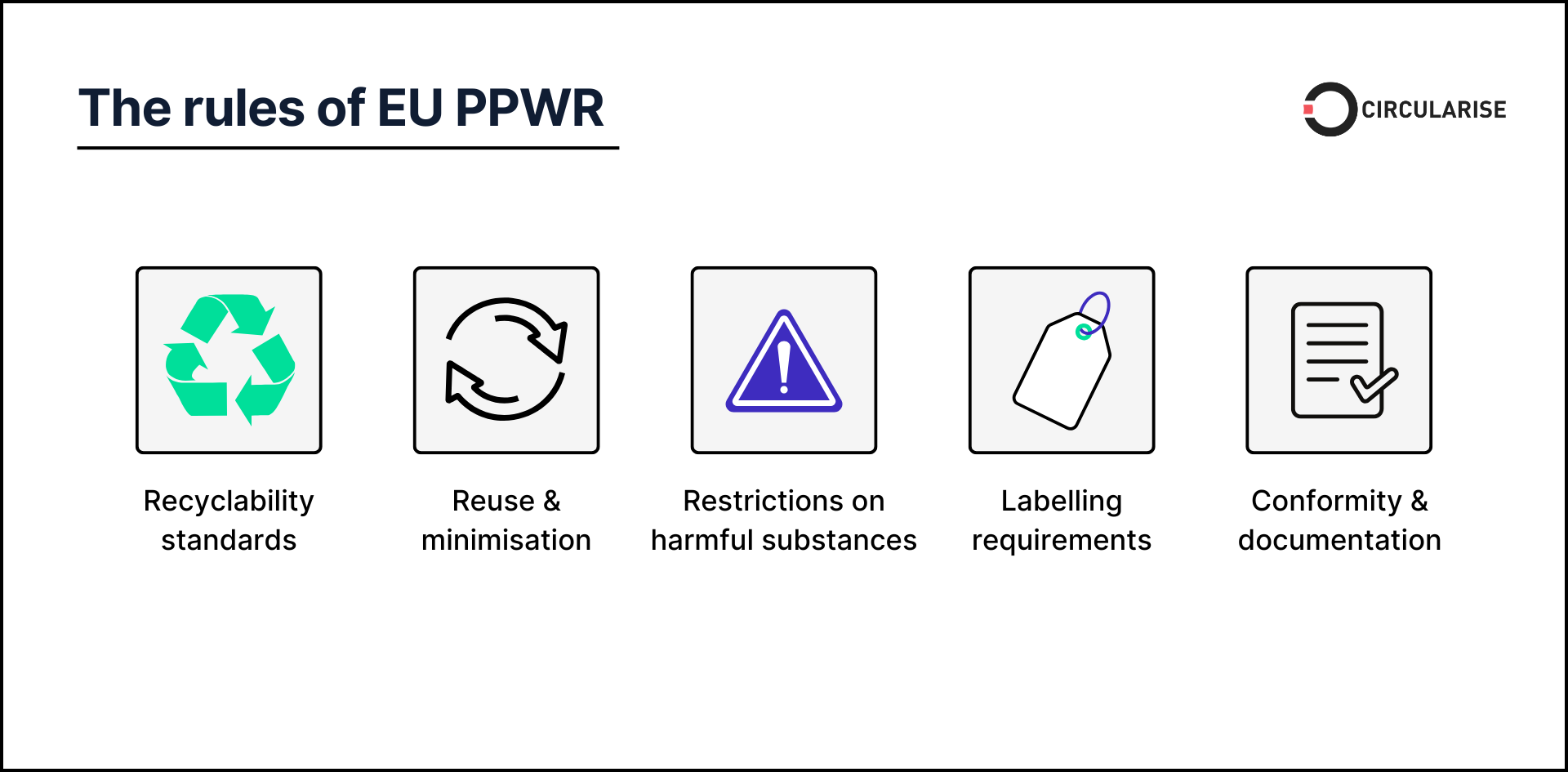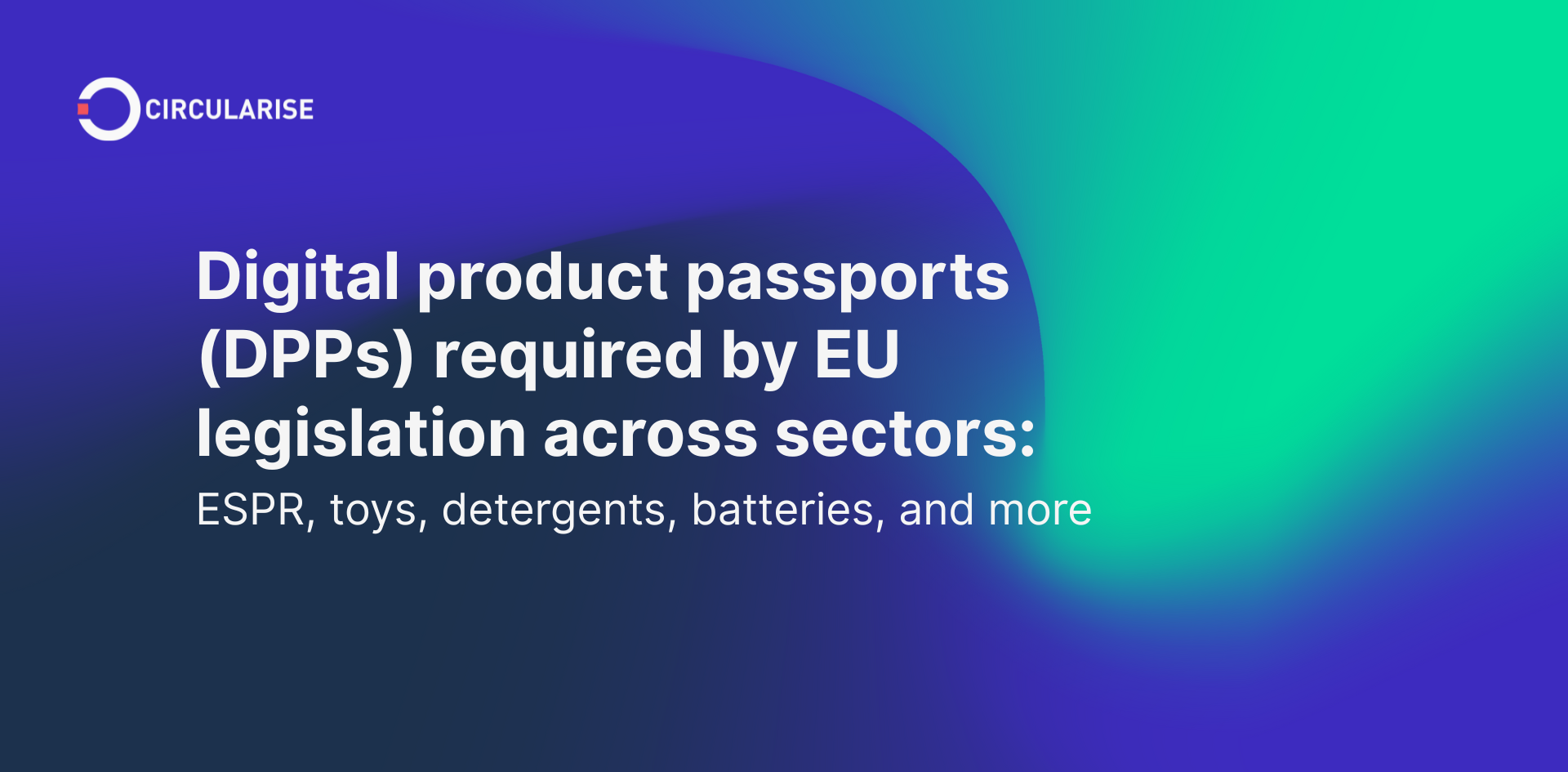This is Part 6 of the series "Get Ready for ESPR: Shaping the Future of Sustainable Business."
This article will explore how different teams within your company can collaborate to not only comply with the Ecodesign for Sustainable Products Regulation (ESPR) but also maximise your competitive advantage.
Complying with the ESPR is not a task for one department — it’s a cross-functional effort. From ensuring sustainable product design to managing supply chain traceability and aligning financial strategies, every team must play a role in embedding sustainability into the business. By understanding these roles, organisations can ensure seamless compliance while unlocking benefits such as cost savings, enhanced customer trust, and competitive market positioning.

Internal stakeholder responsibilities for ESPR compliance
1. Design & engineering 🛠️📐
Design and engineering teams are at the forefront of ESPR compliance. They must create products that meet the regulation’s strict sustainability requirements while balancing performance and cost.
Key responsibilities:
- Durability standards: Design products that last longer and withstand stress testing. Ensure products meet high durability and reliability benchmarks to reduce waste.
- Repairability and modularity: Facilitate repair, reuse, and upgrading by incorporating modular designs. Use replaceable components and simplify repairs through clear markings and accessible manuals.
- Recyclability: Design for ease of disassembly, material separation, and recycling at the product's end of life.
- Efficient material separation: Ensure products are designed for easy disassembly to enable efficient material recovery during recycling.
- Sustainable materials: Incorporate recycled content and materials with low environmental impact into product designs.
- Incorporate digital product passports (DPPs): Ensure the necessary product data is available and compliant with ESPR traceability standards.
💡 Example: Stress test components to identify potential weak points and ensure compliance with ESPR durability standards.
2. Supply chain management 🔗🌍
Supply chain teams play a crucial role in ensuring traceability and ethical sourcing, both key aspects of ESPR compliance.
Key Responsibilities:
- Material tracking: Monitor and trace materials across the supply chain, ensuring they meet ESPR sustainability standards.
- Trace material origins: Establish systems to track raw material sources and ensure adherence to sustainable sourcing requirements.
- Supplier engagement: Collaborate with suppliers to address "supplier fatigue" while securing the availability of compliant components. Maintain detailed records of material flows and ensure suppliers provide accurate sustainability data.
- Address gaps in compliance: Monitor the supply chain for policy gaps or inconsistencies and proactively address them.
- Sustainability claims: Back claims with evidence and ensure that suppliers align with the company’s sustainability goals.
- Address policy gaps: Monitor evolving ESPR-related policies and ensure suppliers are aligned with regulatory updates.
💡 Example: Use batch-level or item-level DPPs to track material flows and share sustainability data with partners.
3. Production & operations 🏭⚙️
Operations teams must adapt production lines and processes to meet ESPR requirements while maintaining efficiency and safety.
Key responsibilities:
- Enhance resource efficiency: Optimise energy and material use to meet the environmental performance standards of ESPR.
- Service parts availability: Maintain inventory of spare parts for repair and replacement.
- Modular manufacturing: Implement production processes that allow for the easy assembly and disassembly of modular components.
- Implement waste reduction measures: Minimise production waste through lean manufacturing techniques and improved material use.
- Prepare for future expansions: Develop strategies to accommodate additional product categories under ESPR by 2027.
💡 Example: Adapt production lines to incorporate recycled materials and reduce energy consumption.
4. Finance & legal 💰⚖️
The finance and legal teams ensure compliance with ESPR’s regulatory framework while mitigating financial risks associated with non-compliance.
Key responsibilities:
- Document retention: Maintain EU Declarations of Conformity and technical documentation for at least 10 years, as required.
- Cost analysis: Assess the financial impact of compliance, including investments in sustainability.
- Liability management: Prepare for potential warranty and liability implications under the new rules.
- Regulatory navigation: Understand transitional regimes and align investments with long-term compliance goals.
- Policy monitoring: Stay updated on ESPR-related regulatory changes and ensure timely adjustments to compliance processes.
- Engage in policy advocacy: Participate in public consultations and forums to shape upcoming ESPR regulations.
💡 Example: Develop a compliance budget that includes investments in IT infrastructure for managing DPPs.
5. Sales & marketing 🛍️📈
Sales and marketing teams must communicate the sustainability benefits of ESPR-compliant products while ensuring transparency with customers.
Key responsibilities:
- Customer education: Showcase sustainability features in a clear and engaging way.
- Clear product labels: Ensure product labels are accurate, easy to read, and free from misleading symbols.
- Prevent greenwashing: Avoid misleading claims and ensure all marketing materials align with ESPR transparency rules.
- Leverage digital product passports: Provide easy access to digital product passports for customers, especially in e-commerce.
💡 Example: Add direct links to DPPs on product pages and train sales teams to explain sustainability features effectively.
Building a culture of compliance
ESPR compliance requires a shared commitment across all departments. Each stakeholder must understand their role and collaborate to ensure the company meets the regulation’s sustainability and circularity goals. By embedding compliance into daily operations, organisations can not only avoid penalties but also position themselves as leaders in sustainable business practices.
In Part 7, the final article, we’ll address how to tackle challenges in ESPR compliance and refine strategies for continuous improvement.
📚 Explore the series at your own pace.
Part 1: What you need to know about ESPR
Part 2: Horizontal rules under ESPR
Part 3: Sustainable discarding and destruction of products under ESPR
Part 4: ESPR enhances traceability and transparency with digital product passports
Part 5: Specific ESPR requirements for manufacturers, importers, distributors, and retailers
Part 7: Turning compliance challenges into opportunities with ESPR

Circularise is the leading software platform that provides end-to-end traceability for complex industrial supply chains. We offer two traceability solutions: MassBalancer to automate mass balance bookkeeping and Digital Product Passports for end-to-end batch traceability.
Would you prefer to have this delivered straight to your inbox?








